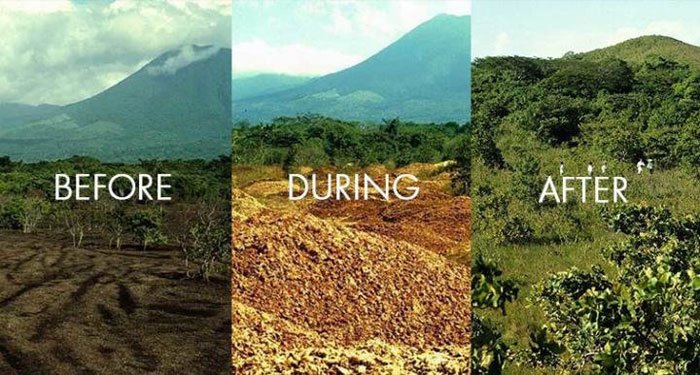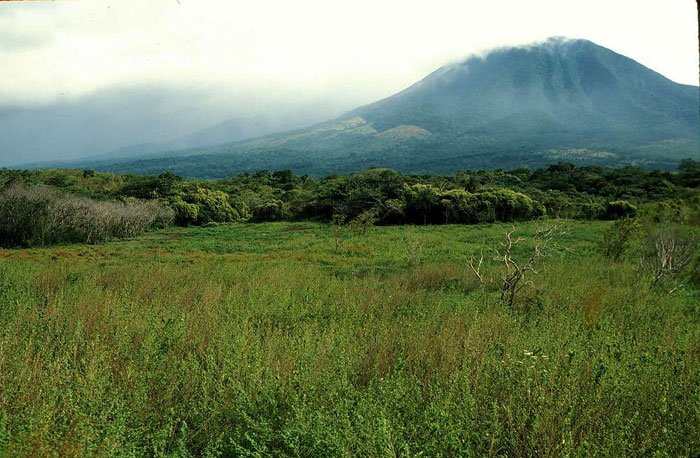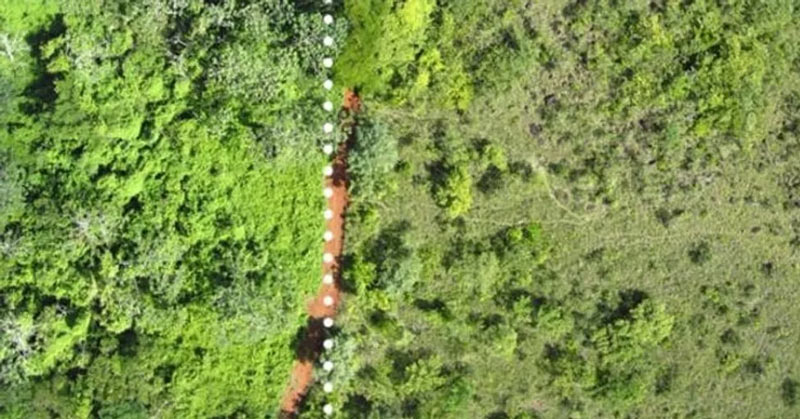What do you usually do with the peel after you eat an orange? If you’re like most of us, you simply throw it away. But have you ever considered that that humble piece of kitchen scraps might actually play a role in reviving ecosystems? More than twenty years ago, two ecologists decided to perform an experiment. They dumped a bunch of orange peels onto a plot of land and left them. Over two decades have now passed, and that land is now unrecognizable.
Dumped Orange Peels
In 1997, ecologists Daniel Janzen and Winnie Hallwachs partnered with an orange juice company in Costa Rica. The company donated a portion of land to Área de Conservación Guanacaste, a nature preserve in the northwest of the country.
In exchange, the park would allow the company to dump the orange peels and pulp it wasn’t using onto a heavily grazed, forested area nearby, free of charge.
In 1998, one thousand trucks dumped over twelve thousand metric tonnes of orange compost onto the plot. They erected a sign on the plot to ensure future researchers could locate the area, and then left it. Unfortunately, a rival juice manufacturer sued the company involved in the study for “defiling a national park”. This forced the experiment to end, and the site was mostly forgotten about [1].
Sixteen Years Later
Sixteen years later, Janzen sent one of his graduate students, Timothy Treuer, to look for the site. Treuer found it, but couldn’t find the sign. Initially, Treuer didn’t even know if he was in the right place. Why? Because the land was so drastically different than what it was sixteen years prior. Compared to the plot of land next to it, which was mostly barren, the area with the compost was so thick with vegetation that he couldn’t find the sign.
“It was just hard to believe that the only difference between the two areas was a bunch of orange peels. They look like completely different ecosystems,” he explained [2].

Truer and a team of researchers continued to study the area for the next three years. They measured various qualities of the site against the adjacent pastureland. That land had predominantly one type of tree. The site of the dumped orange peels had two dozen different species of vegetation.
The site had greater biodiversity, richer soil, and a better-developed canopy. Jon Choi, the co-author of the study, described a fig tree that had grown that was three feet in diameter.
“You could have had 20 people climbing in that tree at once and it would have supported the weight no problem,” he said. “That thing was massive.” [2]

Read: IKEA Released Free Design For Garden Sphere That Feeds a Neighborhood
Combat Climate Change with Dumped Orange Peels?
How did orange peels have such a dramatic effect on this plot of land?
“That’s the million dollar question that we don’t yet have the answer to,” Treuer admitted. “I strongly suspect that it was some synergy between suppression of the invasive grass and rejuvenation of heavily degraded soils.” [1]
Despite this, the researchers are hoping that the success of this project will encourage other, similar conservation projects. The findings were reported in The Journal of the Society of Ecological Restoration (5).
This experiment showed the orange peels were beneficial for two main reasons:
1. They use up waste
There are nearly endless amounts of nutrient-rich food waste in the world. In the United States alone, approximately sixty million tonnes of produce ends up in landfills every year. That’s almost half of all US produce [3].
This experiment demonstrates the immense potential of that waste.
“We don’t want companies to go out there will-nilly just dumping their waste all over the place, but if it’s scientifically driven and restorationists are involved in addition to companies, this is something I think has really high potential,” Truer said [2].
2. They remove carbon dioxide from the air
This forest is an example of a secondary tropical forest. That means that it grew after the original forest was torn down. Research shows that secondary forests sequester eleven times more atmospheric carbon than old forests. This makes them essential at helping to slow climate change [4].
Read: Four Solar-Powered River Barges Are Cleaning Up The World’s Most Polluted Rivers
Next Steps
Treuer says that the next step is to examine whether other ecosystems, such as dry forests or tropical savannas, will react in the same way to similar deposits.
“It’s a shame where we live in a world with nutrient-limited degraded ecosystems and also nutrient-rich waste streams. We’d like to see those things come together a little bit,” said Treuer [1].
As for that sign, they did finally find it. After several visits to the site, Treuer, along with paper’s senior author, David Wilcove, and Princeton Professor Rob Pringle, found it under a thicket of vines.
“It’s a big honking sign,” said Choi [2].
Keep Reading: The Guys Who Sell Ocean Plastic Bracelets Are Closing in on 17 Million Pounds of Waste Pulled From the Sea
Sources
- “How 12,000 Tonnes of Dumped Orange Peel Grew Into a Landscape Nobody Expected to Find.” Science Alert. Peter Dockrill. August 20, 2017.
- “A juice company dumped orange peels in a national park. Here’s what it looks like now.” Upworthy. Eric March. Aygust 23, 2017.
- “Half of all US food produce is thrown away, new research suggests.” The Guardian. Suzanne Goldenberg. July 13, 2016.
- “Biomass resilience of Neotropical secondary forests.” Nature. Lourens Poorter, et al. February 3, 2016.
- “Low-cost agricultural waste accelerates tropical forest regeneration” The Journal of the Society of Ecological Restoration. August 17, 2017.

